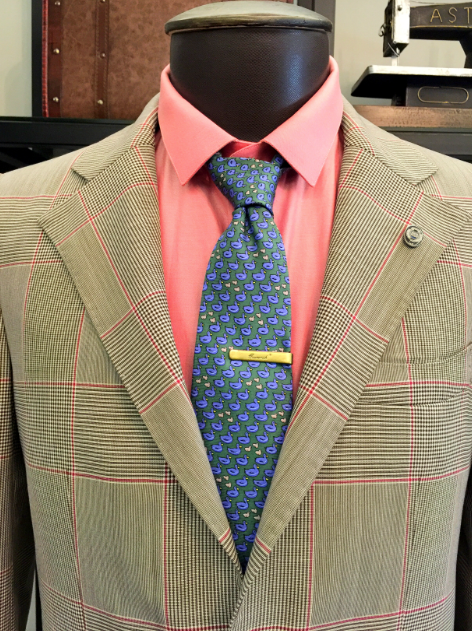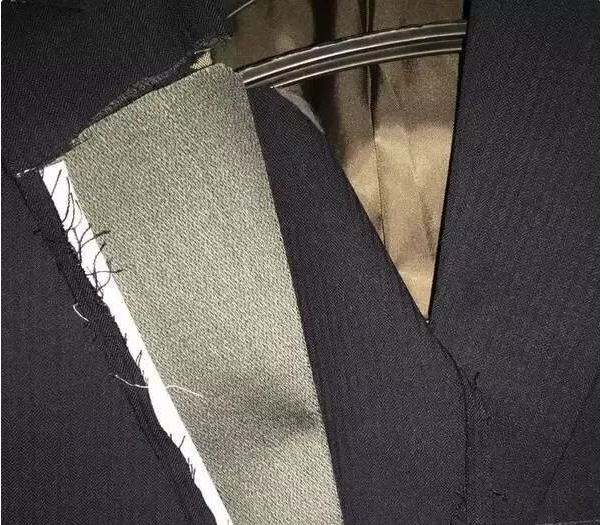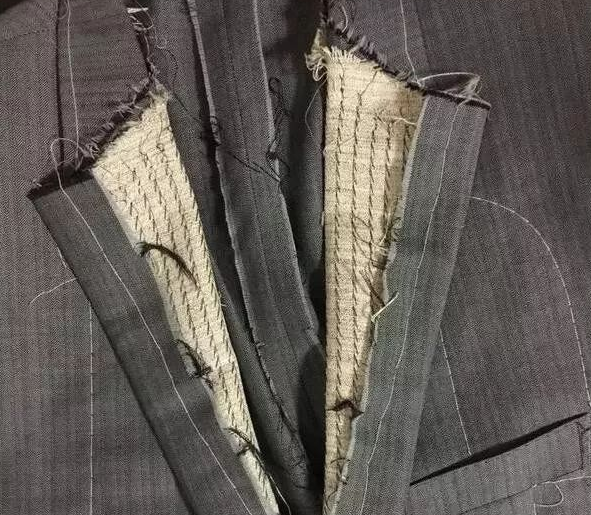Wie kann man das Futter eines Anzugs identifizieren?
2022-10-19.
There is a lot to learn about "suits" and as a modern, sophisticated man, if you are happy to go for a bespoke suit, then you should have a general knowledge of the suit making process.
We all know that a suit will definitely have a lining, and although the rules and regulations of suit making are complex, the chances of a good or bad lining are a hard differentiator for the grade of the suit. There are generally 3 types of lining: full linen, half linen and bonded lining. So how do we differentiate between them when we customise or buy a suit?
Firstly, what is lining? A lining is the inside part of a suit that is double stitched, commonly known as the lining. The lining is added to prevent static electricity, because the fabric is too thin, or because the garment is easily shaped.
The 'backbone' and 'spine' of the suit is constructed from the lining. This is what gives the suit its beautiful external shape. A good suit has strict requirements for craftsmanship, with four major processes and more than 300 small steps required to produce a suit. The difference in craftsmanship directly determines the quality of the suit.

what is fusible interlining?
Bonded interlining is the most common modern suit process, where the front piece of the suit is made from a special adhesive lining fabric invented using modern technology, and the lining fabric is bonded to the face of the suit by means of machine heat pressing, etc. It is a low-end suit process. The bonded lining process is relatively simple and suitable for mass production lines, with high unit production efficiency and low costs. However, fusible interlining can make the front of the suit flat and slightly stiff. The viscosity of the lining is gradually lost, leading to wearability and blistering.
What is semi-linen (semi-wool lining)?
Semi-wool lining is a classic suit process based on the full wool lining process, where the front of the suit is covered with a bonded lining and then a traditional lining is used on the top half of the suit. This improves the stiff look and gives the suit a fuller, more natural and straighter front. The presence of a fusible lining still destroys the lightness and drape of the fabric and adds to the process resulting in higher costs and higher selling prices.
What is a full linen lining (full wool lining)?
Full linen lining is a traditional process used to make suits, and is now the preferred process for couture and high-end suits at home and abroad. A non-adhesive lining is used on the front of the suit and the lining is stitched to the face of the suit by means of a needle and thread stitch. It relies entirely on the wool lining to set off the shape of the suit and is a premium suit process.
So how do we identify these three different processes in our lives?
Bonded lining is characterised by the front piece, the fabric and its inseparable parts, being thicker than the sleeves and back, and without the addition of half the upper body length of the wool lining. To determine this, simply lift the corner of the suit upside down to see if there is another layer, and if not, you can pass it off.
The picture below shows a bonded lining with the collar open.

Half linen lining: a suit with a half linen lining still has a bonded lining, so slide it down from the chest and if there is a difference in thickness high up in the process, it is usually half linen lining.
Full linen lining: gently pinch the hem of the front piece, if it is the same thickness as the one on the sleeve, there is no bonded lining on this fabric. Then grab the front of the front piece, the thickness feels heavier, then you can basically conclude that it is linen lining process.
The picture below shows the fur-lined collar with the collar open.
